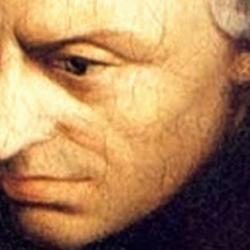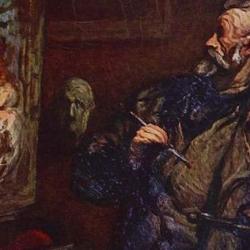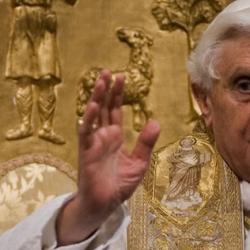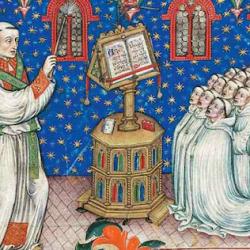The essays on art collected in Tikkun Olamoriginated from Gillian Rose’s “broken middle,” writes editor Jason Goroncy. He includes a long quotation from a Rowan Williams essay on Job to explain.
Williams writes, “Mere resignation is a betrayal; structuring and explanation is a blasphemy. What is left, then, if the world is neither to be accepted nor to be rationalized? What remains is Job’s protest. . . . His world is not a complete structure to which there can be only a passive response, nor is it a problem to which he, his consciousness, is the solution. It is a disordered flux within which he has to find a place; but this finding of a place . . . is also to adopt a ‘position,’ in every sense: to make an option about reality, to be committed to a ‘direction’ . . . . of and in the world” (quoted p. 3).
Painter Libby Byrne’s essay, for instance, proposes that we live “in a place of exile and melancholy” (99). and that artists retain integrity only by “living close to the wound.” She quotes John O’Donoahue, “The luminous beauty of great art so often issues from the deepest, darkest wounding” (102), and she examines sacramental elements in the work of Anselm Kiefer (103-5).
Yet even Byrne concludes that “our collective hope is that time spent in the presence of the wound will help ‘mend the world’” – tikkun olam (105). Art that stays close to the wound can heal.
Trevor Hart raises some Christian objections to the Jewish idea that human beings are God’s partners in fixing the broken middle: Does it take sin seriously enough? Does it overestimate human competence? Yet Hart concludes that a Trinitarian/incarnational ccount of redemption harmonizes the “from above” and “from below” dimensions of the world repair: “only God can finally heal the world and bring it to completion. But he has chosen to do so not without a corresponding human action, but precisely in, with and through such action, concluded once and for all in the humanity of his own Son, but participated in and replicated ever and again in the Spirit-filled lives of others until the time when God will be all in all.” God alone brings new creation but in the meantime, we declare its reality, perform parables of new creation, and thus conform our existence “piece by piece, more fully to its promised destiny in God’s hands” (51-2). Quite a mouthful; more succinctly, Hart thinks that Tolkein’s idea of “subcreation” is eminently orthodox, a Christian version of tikkun olam.
Other essays explain how this works out practically, how artists’ attentiveness to the world, their depictions of both its ugliness and beauty, contribute to its repair. Among the clearest was Stephen Guthrie’s essay on singing, in which he declares that “Singing is a kind of ear training,. . . . Singing involves an awareness of sound and an awareness of oneself in relation to one’s environment. As I sing, I attend to my place within a space. I become aware of the dimensions and the kinds of surfaces in the area around me, and how it responds to my voice. If sin is ‘homo incurvatus in se’ . . . then song is potentially one of the means by which we are moved outside of ourselves. In song we not only extend ourselves into the world; the surrounding world is carried back to us, indeed, into us, along with the sound of our voice. Song then becomes a kind of training ground for acting in dialogue with my environment” (199). As we sing with the music of the spheres, we are reintroduced into its harmonies.
Tikkun olam indeed.















